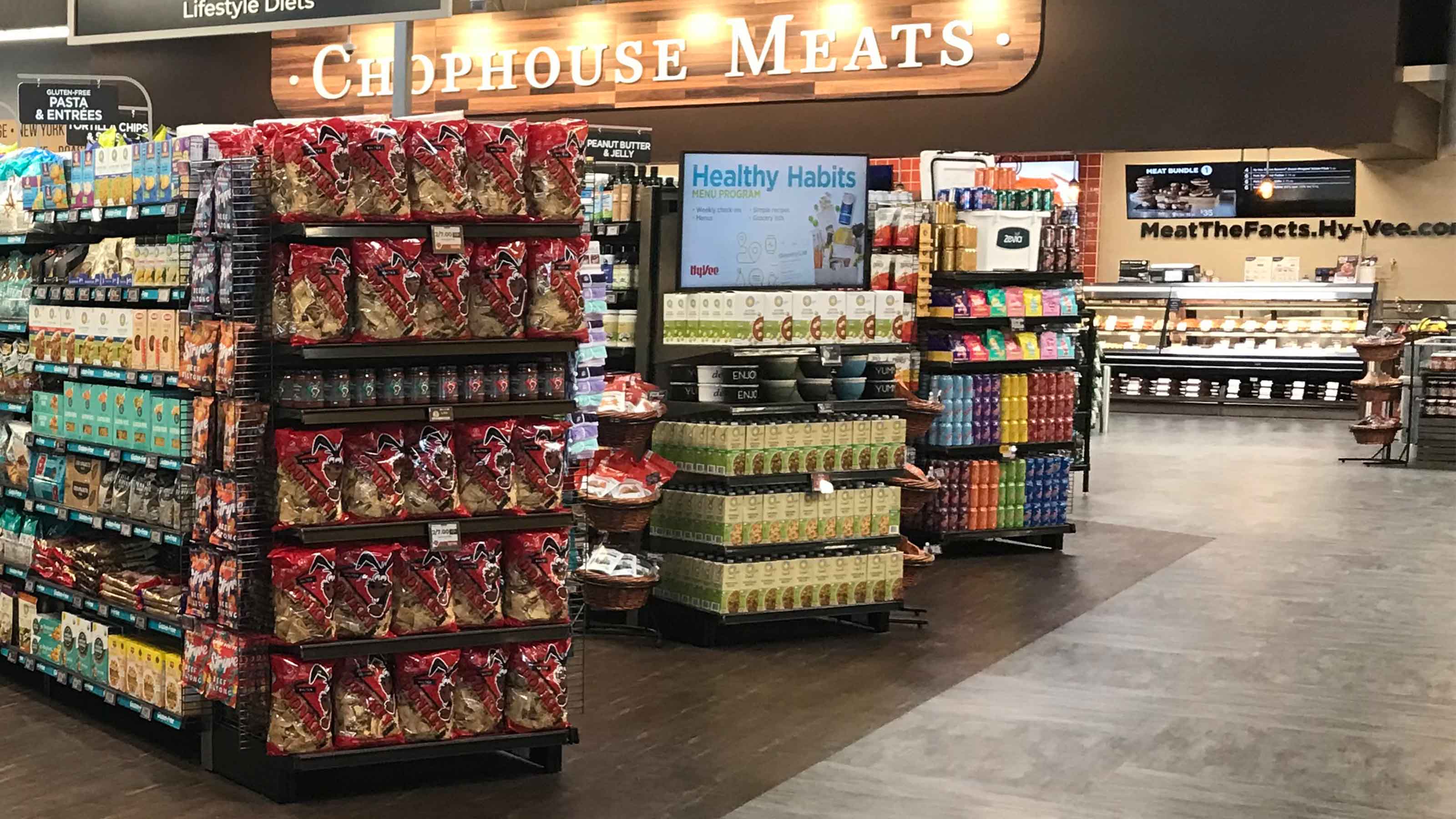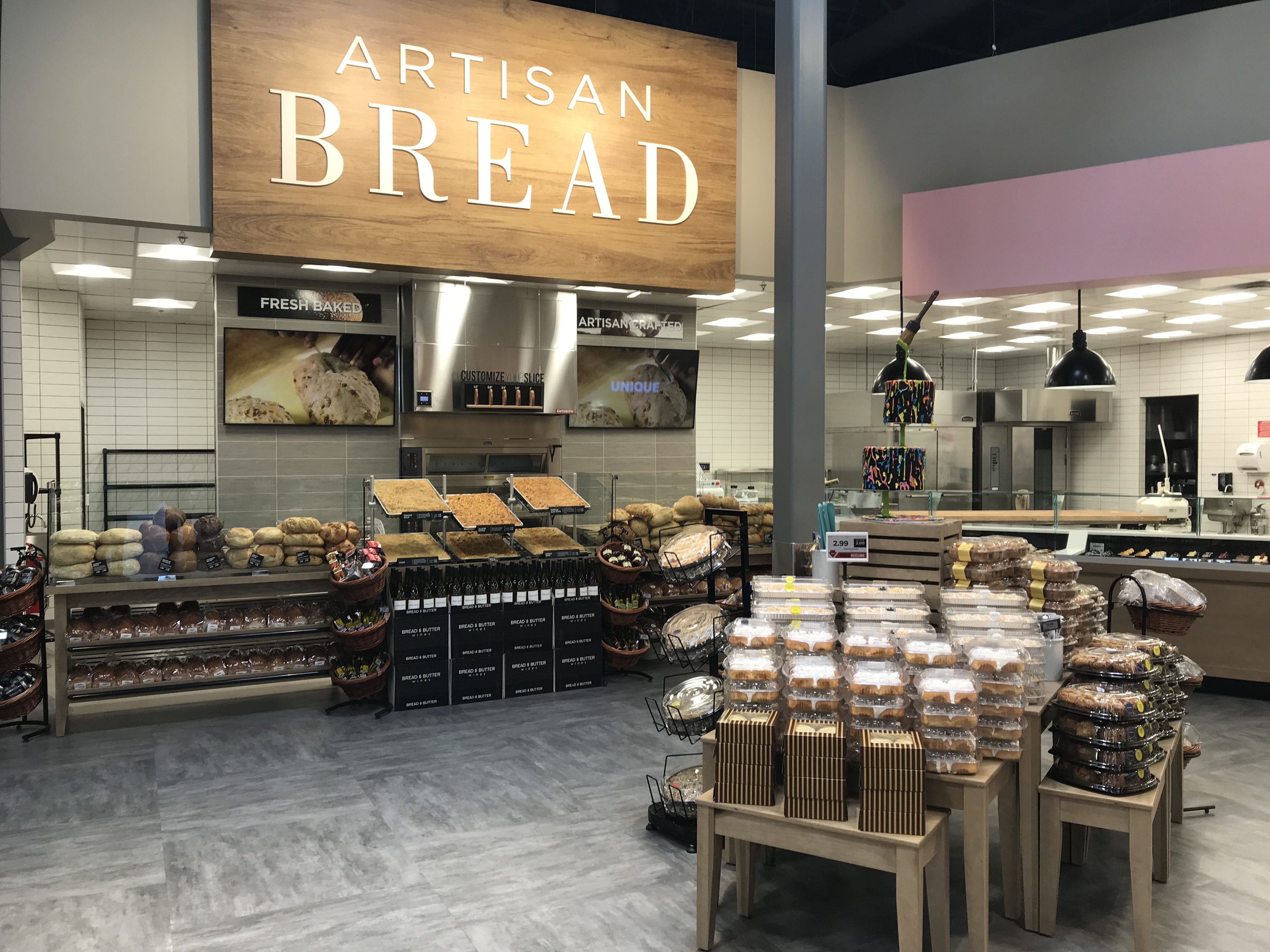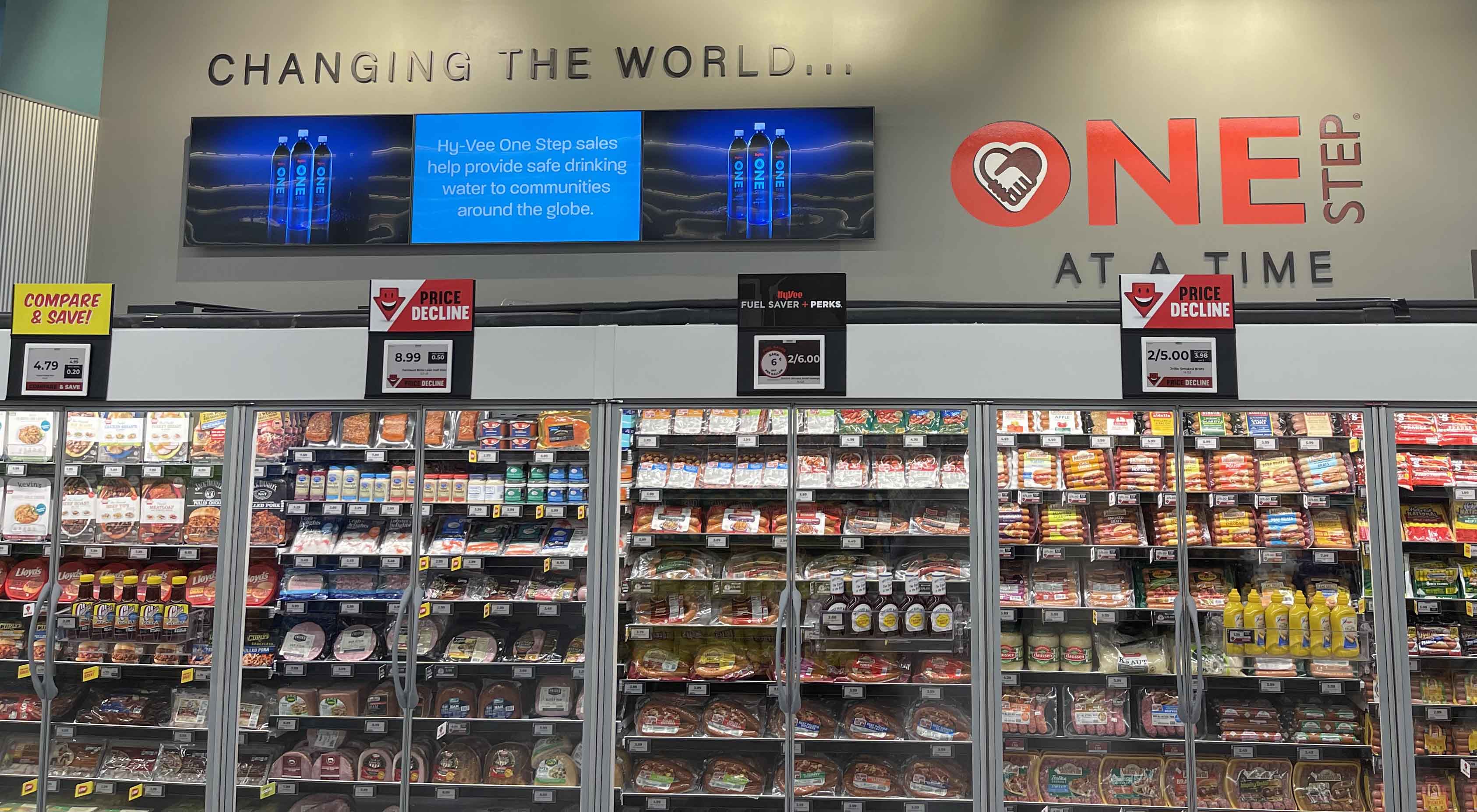
Grocery shopping is about to get a lot more engaging.
Supermarket chain Hy-Vee is in the process of launching a new digital signage network across its 550 retail locations in the Midwest and Southern United States. Driven by the cloud-based Samsung VXT Content Management System (CMS), the deployment features more than 10,000 Samsung QBR Series commercial displays.
[Editorial: Ballad of the Broken Signage]
Hy-Vee’s RedMedia, the retailer’s media network, is leveraging the technology for an in-store digital strategy designed to engage shoppers while generating new revenue streams through advertising. A+ Communications & Security, a Hy-Vee company headquartered in Des Moines, IA, is overseeing the technology integration.
Positioned in aisles, deli, meat and seafood counters, wine and spirits departments, and food courts—as well as Hy-Vee Fast & Fresh convenience locations—the screens display promotions, product pairing suggestions, recipes, cooking demonstrations, menus, and company announcements. For ad sales and placement, Hy-Vee RedMedia has partnered with Samsung Ads, Samsung Electronics’ advertising division. Launched in the spring of 2023, Samsung Ads combines in-home Connected TV (CTV) with Digital Out-of-Home (DOOH) advertising, so brands can connect with their target audiences both at home and while they shop.
“Hy-Vee’s RedMedia provides a best-in-class solution for suppliers and their brands,” said Jason Farver, president of RedMedia. “We pride ourselves on our excellent customer service and ability to allow companies to reach specific consumers across various channels so they can create an omnichannel marketing strategy via Hy-Vee’s in-store marketing, loyalty programs, and events.”
An Evolving CMS
Chris Allison, general manager, DOOH at Samsung Ads, said advertisers are seeking a tailored approach to engaging consumers through mobile, CTV, and DOOH. Then, Samsung Ads measures the impact of the advertising, so it can be "smart about the way we are targeting your audience, based off of the efficiencies that you can glean from data-driven advertising. The goal is to reach consumers as they move from the sofa to the store.”

Allison also noted that the Hy-Vee deployment, which features strategically placed displays throughout each of its retail locations, illustrates the demand for more targeted advertising in the DOOH space. “People don’t want to buy Digital Out-of-Home advertising on every screen out there,” he said. “They want to understand where their ads are running, and they want to make sure that those ads are going to be seen by the audience that they care about in premium locations.”
[KSCAPE and Samsung Collaborate to Create Meeting Room Harmony]
Initially, the retailer opted for an on-premise solution. According to Parrish Chapman, senior director, enterprise retail sales accounts at Samsung Electronics America, the company’s relationship with Hy-Vee began with the deployment of its displays and MagicINFO digital signage software. “They chose, at the time—because of their growth trajectory—to have it hosted on their servers,” he recalled. As their business model evolved, so did the need for a newer, cloud-based system.
The VXT CMS prioritizes ease of use and scalability. “We had to design software for a one-store operator or a single location, but also an operator that may have 1,000 locations and 25,000 devices attached to the CMS,” Chapman explained.
He likened the user experience that VXT offers to building a stack in PowerPoint. “We wanted to simplify the software and change it to be more in line with today’s way of launching and using software," Chapman added. "We took all the really great things about MagicINFO, but we improved the useability with VXT and then we added some new features.”
In-Store Digital Strategies
Projects like the Hy-Vee deployment start with setting clear parameters for display placement and content requirements. For example, many retailers don’t want advertising that’s political or age inappropriate. “We want to partner with our retailers, so they have a say on the ads that are being run,” Chapman said. “We have to define the hardware placement and the client’s digital objectives.”
[The Integration Guide to Digital Signage 2023]
From a retail advertising perspective, Allison explained this may include the display of endemic advertising (brands that the store sells) and non-endemic messaging (ads from other local businesses, for example). “For the endemic brands, when the customer is walking through the aisles of a store, this is their last opportunity to influence them,” he said.
Non-endemic advertisers can use this advertising opportunity to attract people to their own businesses—once the grocery shopping is done, of course. “It’s an opportunity to reach [consumers] with relevant messaging in a contextually relevant location,” Allison added.
However, the digital signage network isn’t all about the advertising. At Hy-Vee locations, 50% of screen time is dedicated to messaging designed to build a connection between the retailer and its customers. Segments may highlight the company’s corporate social responsibility efforts, employee profiles, or special promotions that are relevant to a specific location. “They want to tell a deep brand story,” Chapman said.
Scalability and Monetization
While the Hy-Vee deployment involves thousands of displays, the cloud-based VXT CMS allows small organizations access to enterprise-level capabilities. Content scheduling and management (including proof of play) is done through the Samsung cloud portal, and its managed services offering provides remote monitoring and troubleshooting, as well as onsite servicing.
“Our technology is built to where small operators and AV integrators can utilize it to build their business,” Chapman said. “This is a tech buffet where you can decide what you want to have on your plate, depending on your needs.”

For Allison, one of the biggest advantages that Samsung Ads offers is the ability to offset hardware and software costs through the sale of advertising on an in-store network. But the goal should be running ads that will be beneficial to both the advertiser and the retailer.
[Case Study: DOOH That Defies Geography]
“It’s really about making sure that we understand what the client’s concerns and considerations are when they’re thinking about the right advertising,” he said. “The whole theme here is quality: quality of advertisers and quality of placement.”
Retail shoppers must also be part of this equation, Allison added. “We want to make sure that this is a top-notch experience for the consumer,” he explained. “It’s not just about placing ads all day long throughout the store—it’s about interspersing them with relevant content, depending on what store location you’re in. It’s this combination that is opening the door to a new face of the retail environment and Digital Out-of-Home.”







